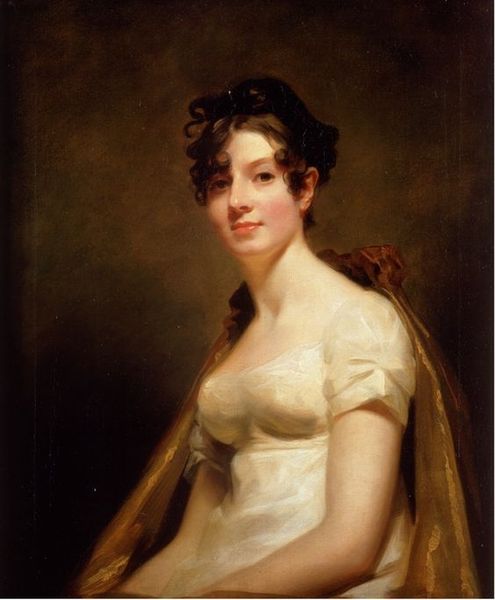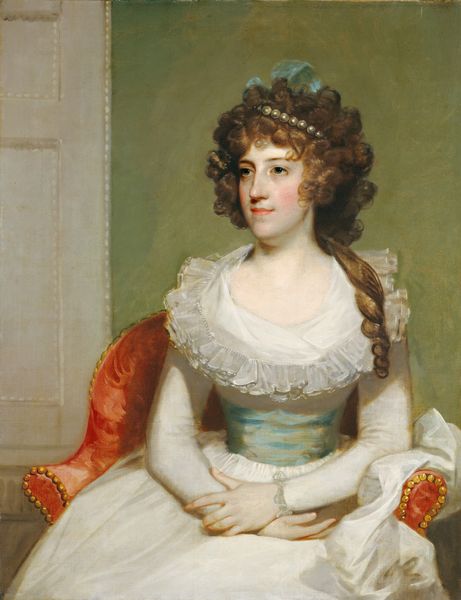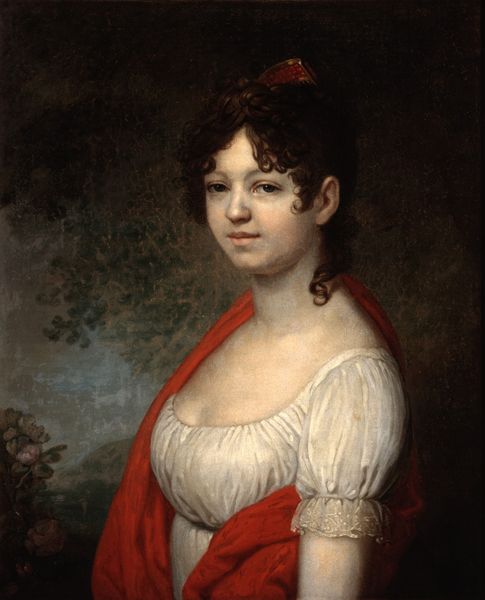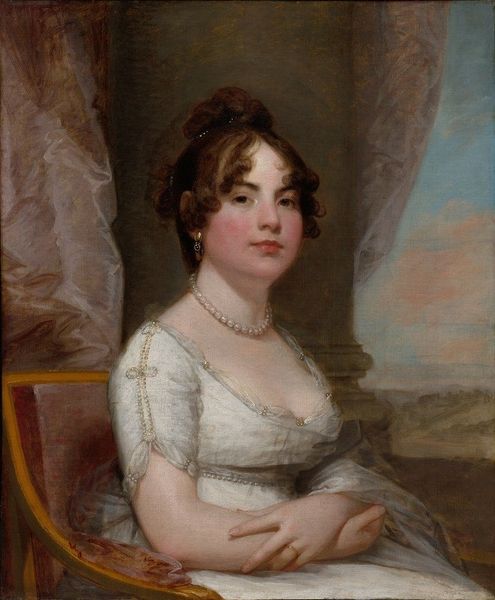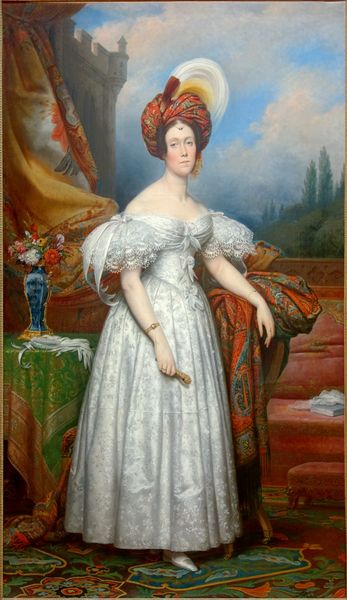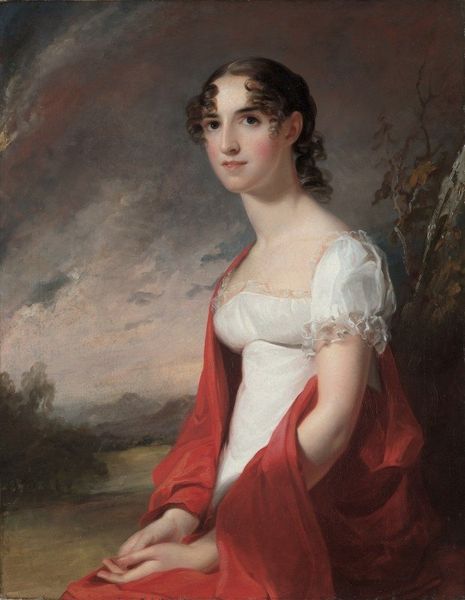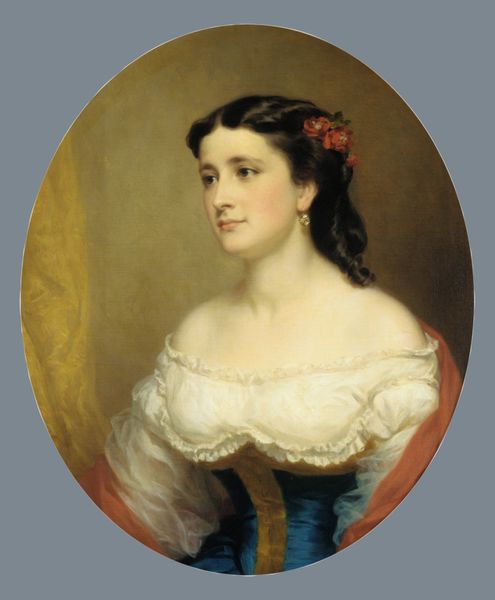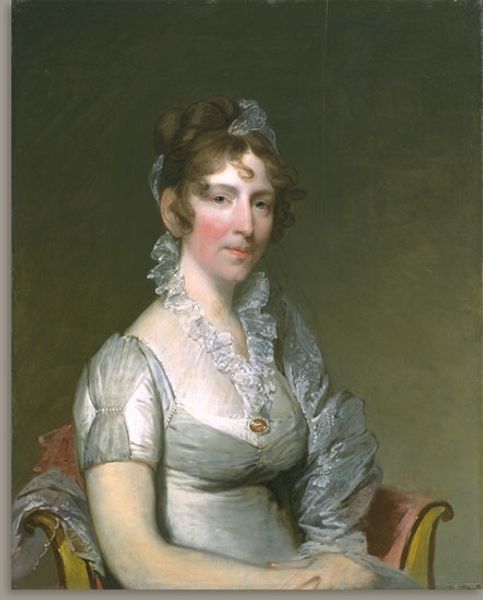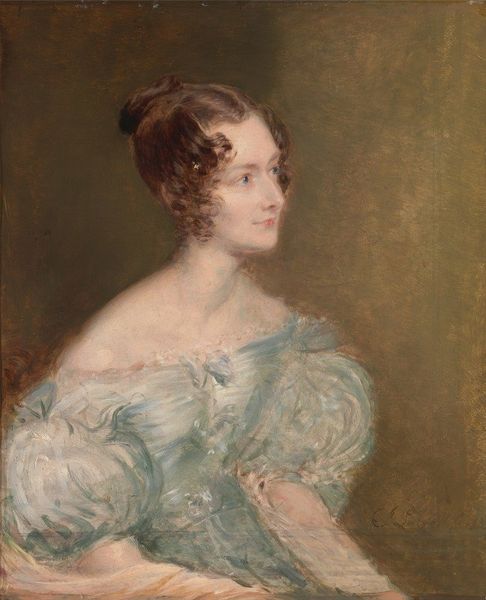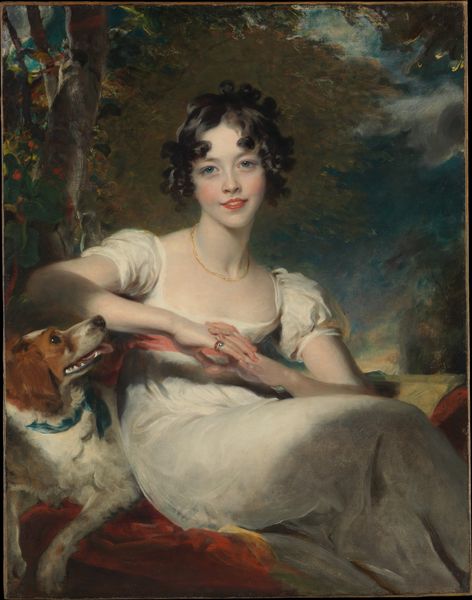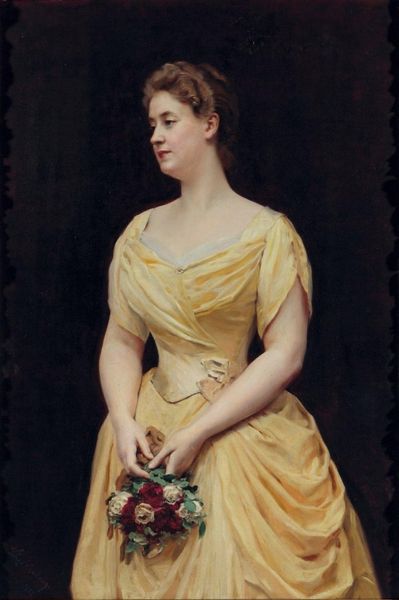
painting, oil-paint
#
portrait
#
painting
#
oil-paint
#
romanticism
#
genre-painting
#
academic-art
Dimensions: 34 1/2 x 27 11/16 in. (87.6 x 70.3 cm)
Copyright: Public Domain
Editor: Here we have John Wesley Jarvis's portrait of Mrs. Robert Dickey, Anne Brown, painted between 1807 and 1810. The oil paint gives her dress this really lovely, almost luminous quality. What strikes me is how she's positioned - indoors, but with this sort of wild, romantic landscape behind her. What do you make of it? Curator: I find it compelling to consider the materials themselves. Jarvis’s use of imported oil paints speaks to global trade networks that supported even nascent American artistic production. The canvas, the pigments, all of it relies on a complex system of labor and exchange. What does the quality of her dress say about her family’s social standing and where the fabrics were sourced? Editor: That's a great point; the materials do reveal a lot about access and status. So you're seeing the portrait less as a window into Anne Brown's soul, and more as a document of the material conditions of her life? Curator: Precisely. Look at the way Jarvis depicts the jewelry and the delicate lace. These aren't just decorative elements; they are signifiers of wealth and class. Consider, too, the labor involved in producing and maintaining such garments. These were carefully fabricated, they tell us about economic power, and the expectations placed upon women of that era. Editor: It’s interesting to think about how a portrait can function as a record of the production of luxury goods, and a depiction of social class! How does viewing the portrait through a materialist lens shift our understanding of 19th-century American art? Curator: It forces us to consider who had access to art, who controlled its production, and whose stories were deemed worthy of representation. Instead of focusing solely on artistic genius or aesthetic beauty, we confront questions of labor, value, and the power dynamics embedded within the art market. Editor: I’ve definitely gained a new appreciation for how artworks, including portraits, embody and reflect historical systems of labor and material production. Curator: Yes, it is not just about who is being painted but the whole machinery behind it.
Comments
No comments
Be the first to comment and join the conversation on the ultimate creative platform.
